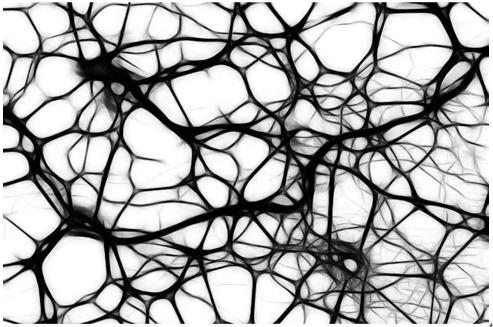博文
鸟类神经元使用的葡萄糖比哺乳动物神经元少三倍
 精选
精选
||
鸟类神经元使用的葡萄糖比哺乳动物神经元少三倍
诸平
Credit: Pixabay/CC0 Public Domain
根据细胞出版社(Cell Press)2022年9月8日报道,鸟类神经元使用的葡萄糖比哺乳动物神经元少三倍(Bird neurons use three times less glucose than mammalian neurons)。
鸟类具有令人印象深刻的认知能力,并显示出高水平的智力。与同样大小的哺乳动物相比,鸟类的大脑也包含更多的神经元(neurons)。2022年9月8日在《当代生物学》(Current Biology)杂志网站发表的一项新研究将有助于解释鸟类如何能够维持更多的脑细胞:它们的神经元以葡萄糖的形式消耗更少的燃料。详见Kaya von Eugen, Heike Endepols, Alexander Drzezga, Bernd Neumaier, Onur Güntürkün, Heiko Backes, Felix Ströckens. Avian neurons consume three times less glucose than mammalian neurons. Current Biology, Published: September 08, 2022. DOI: 10.1016/j.cub.2022.07.070. https://www.cell.com/current-biology/fulltext/S0960-9822(22)01219-2
参与此项研究的有来自德国波鸿鲁尔大学(Ruhr University Bochum)、德国科隆大学医学院和科隆大学医院(Faculty of Medicine and University Hospital of Cologne)、德国尤里希研究所(Forschungszentrum Jülich GmbH)、德国波恩-科隆德国神经退行性疾病中心{German Center for Neurodegenerative Diseases (DZNE), Bonn-Cologne, Germany}、德国马克斯·普朗克代谢研究所(Max Planck Institute for Metabolism Research, Cologne, Germany)、德国杜塞尔多夫海因里希·海涅大学(Heinrich-Heine University, Düsseldorf, Germany)。
德国波鸿鲁尔大学的卡娅·冯·尤根(Kaya von Eugen)说:“从本质上来说,最让我们惊讶的不是神经元消耗更少的葡萄糖,这可能是由于神经元大小的不同所造成的。但差异的程度如此之大,以至于大小差异不能成为唯一的促成因素。这意味着鸟类大脑中一定还有其他不同之处,使它们能够保持如此低的成本。”
研究人员解释说,2016年的一项里程碑式的研究表明,与大小相似的哺乳动物大脑相比,鸟类大脑拥有更多的神经元。由于大脑通常由能量昂贵的组织组成,这就提出了一个关键问题:鸟类如何能够支持这么多神经元?
为了回答这个问题,卡娅·冯·尤金和同事们开始根据对鸽子的研究来确定鸟类的神经元能量收支。他们使用成像方法来估计鸟类的葡萄糖代谢(glucose metabolism)。他们还使用建模方法来计算大脑的代谢率和葡萄糖消耗量。
他们的研究发现,当动物清醒时,鸽子大脑消耗的葡萄糖量惊人地低(每100克每分钟27.29±1.57 μmol葡萄糖)。这就意味着大脑的能量消耗出人意料地低,尤其是与哺乳动物相比。
这意味着鸟类大脑中的神经元消耗的葡萄糖平均比哺乳动物大脑中的神经元少三倍。换言之,由于尚不清楚的原因,它们的神经元成本更低。
卡娅·冯·尤根认为,这些差异可能与鸟类的体温升高或大脑的特定布局有关。鸟类的大脑平均也比哺乳动物的大脑小。但它们的大脑仍保持着令人印象深刻的能力,部分原因可能是它们的神经元数量较多,但成本更低。
卡娅·冯·尤根说:“我们的发现解释了鸟类如何能够在不影响处理能力的情况下支持如此多的神经元。在鸟类和哺乳动物漫长的平行进化过程中,鸟类进化出了更小的大脑,大脑中有大量的神经元,这些神经元具有高级认知能力。而且,似乎鸟类特有的元素——神经元大小很小、体温高和特定的鸟脑布局——的综合作用,可能在以更高的效率处理信息方面产生了一个可能的优势:具有高级处理能力的廉价神经元。”
研究人员表示,他们现在想更多地了解鸟类神经元如何消耗更少的葡萄糖。虽然他们对这可能的工作方式有想法,但还需要进一步的研究和测试来揭示“鸟类如何获得如此高的神经元处理效率的确切机制解释。”
本研究得到了德意志就业委员会的支持(Supported by the Deutsche Forschungsgemeinschaft through Gu 227/16-1 and Gu 227/21-1)。
上述介绍,仅供参考。欲了解更多信息,敬请注意浏览原文或者相关报道。
神经元计数揭示陆地脊椎动物大脑复杂性的进化(Neuron counts reveal brain complexity evolution in land vertebrates)
• Brain tissue of awake pigeons consumes 27.29 ± 1.57 μmol glucose per 100 g per min
• This is equal to 1.86 × 10−9 ± 0.2 × 10−9 μmol glucose per neuron per minute
• The neuronal energy budget of pigeons is thus about 3× lower compared to mammals
• This possibly indicates more efficient neuronal processing in the avian clade
Brains are among the most energetically costly tissues in the mammalian body.1 This is predominantly caused by expensive neurons with high glucose demands.2 Across mammals, the neuronal energy budget appears to be fixed, possibly posing an evolutionary constraint on brain growth.3, 4, 5, 6 Compared to similarly sized mammals, birds have higher numbers of neurons, and this advantage conceivably contributes to their cognitive prowess.7 We set out to determine the neuronal energy budget of birds to elucidate how they can metabolically support such high numbers of neurons. We estimated glucose metabolism using positron emission tomography (PET) and 2-[18F]fluoro-2-deoxyglucose ([18F]FDG) as the radiotracer in awake and anesthetized pigeons. Combined with kinetic modeling, this is the gold standard to quantify cerebral metabolic rate of glucose consumption (CMRglc).8 We found that neural tissue in the pigeon consumes 27.29 ± 1.57 μmol glucose per 100 g per min in an awake state, which translates into a surprisingly low neuronal energy budget of 1.86 × 10−9 ± 0.2 × 10−9 μmol glucose per neuron per minute. This is approximately 3 times lower than the rate in the average mammalian neuron.3 The remarkably low neuronal energy budget explains how pigeons, and possibly other avian species, can support such high numbers of neurons without associated metabolic costs or compromising neuronal signaling. The advantage in neuronal processing of information at a higher efficiency possibly emerged during the distinct evolution of the avian brain.
https://blog.sciencenet.cn/blog-212210-1354986.html
上一篇:研究人员在一亿开尔文的温度下进行了20秒的核聚变
下一篇:冬瓜照
